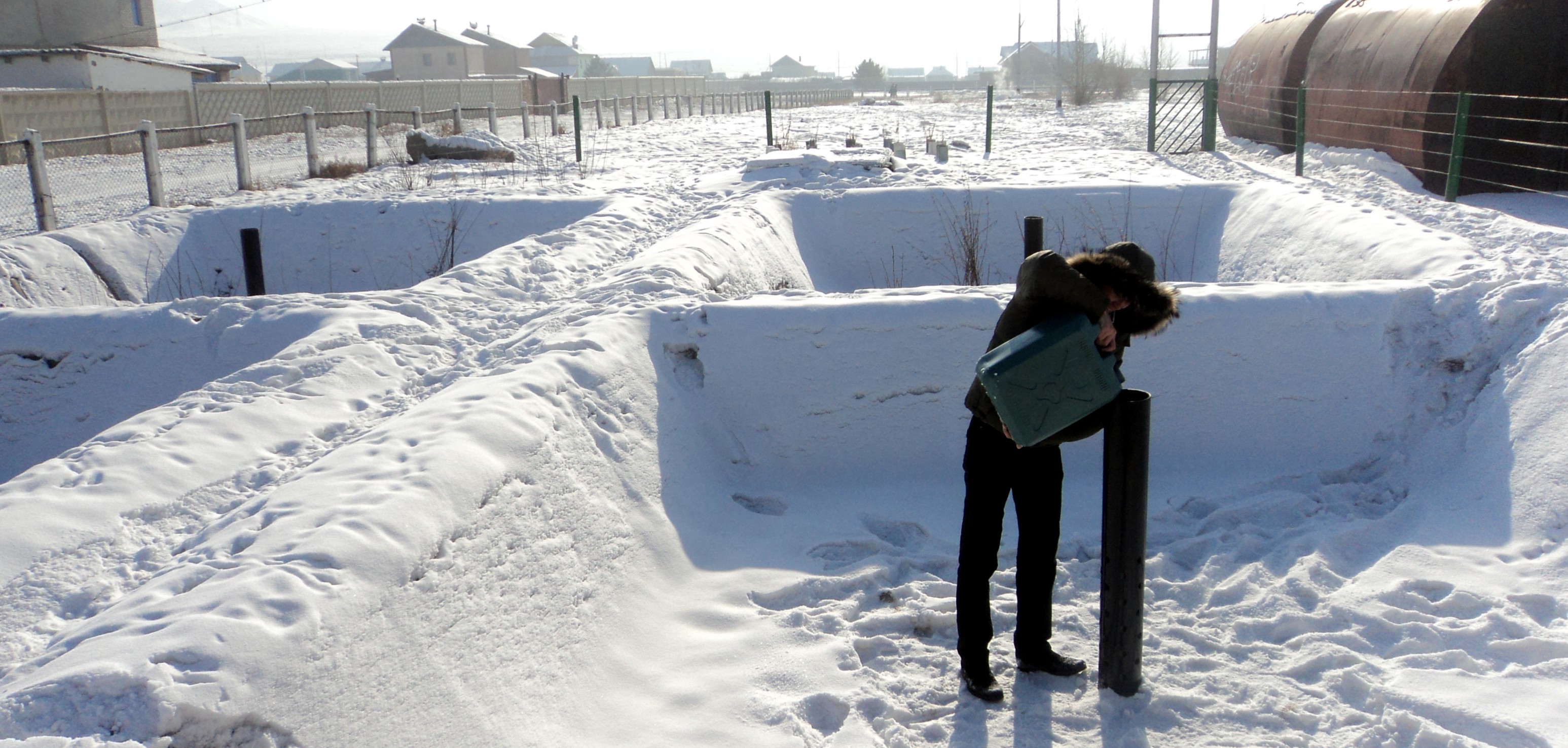
Wastewater treatment plant with integrated wood production (Mongolia)
Link to further information:
FONA: The first Pilot Wastewater Treatment Plant with Integrated Wood Production opened in Mongolia
A combination of environmental, social and demographic conditions including rapid urbanisation together with old and unreliable infrastructures represents a large challenge for the development of appropriate wastewater treatment technologies in Mongolia.
The harsh Mongolian climate provides several significant challenges to drinking and wastewater infrastructure with pipework required to be between 3.5 and 4.5 m below surface in order to avoid freezing. Meanwhile the poor status of the existing sanitation systems represents serious risks for environmental and human health. In addition, the biological treatment step common too many conventional wastewater treatment plants require heating or additional housing during winter months. This leads to significant cost increases, which are often unaffordable in some Mongolian regions.
In order to address these wastewater treatment challenges the UFZ has developed an innovative pilot plant at the MUST University in Darkhan with the primary objective to develop an affordable wastewater treatment approach that is compatible with the harsh climatic conditions of the region and utilise wastewater components for local environmental and economic benefits.
The proposed solution of the research group from UFZ is to pre-treat wastewater for the irrigation of endemic tree species (Salix sp. and Poplar sp.). The irrigation of such rotating coppice is an integral part of the treatment process while also providing an important resource. In order to deal with the extreme climatic issues UFZ researchers are trialling a new approach that would allow for using pre-treat wastewater and the storage of water during colder months within the irrigated area. This approach saves substantial amounts of money due to the fact that the system does not use a secondary treatment step and a separate component for winter storage.
The pilot treatment system has been build at the Mongolian University of Science and Technology (MUST University) in Darkhan and in cooperation with the local researchers the feasibility of the technology is evaluated addressing the following research questions:
- What is the endemic soil profile’s ability to remove or transform contaminants of concern (pathogens, metals and nutrients) in primary treated wastewater?
- What is the influence of trees (Populus sp. and Salix sp.) on the quantity and quality of infiltrate from primary treated wastewater after its application to the endemic soil profile?
- What influence does winter freezing in primary treated wastewater have on tree (Populus sp. and Salix sp.) survival, productivity and health when compared to trees receiving optimised (growing-season only) irrigation with primary treated wastewater?
If proven successful it is hoped that the approach could also be applied in other geographic regions with cold climate.
